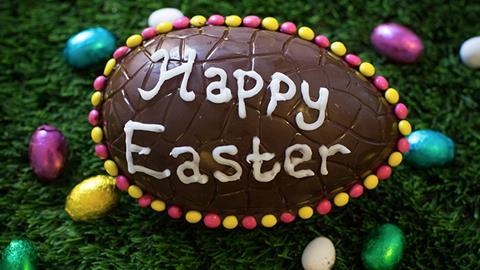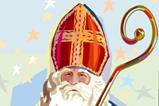Why do we eat chocolate eggs at Easter? What’s with school children making bonnets? And why is it called ‘Easter’ at all? Karen Murdarasi shares some little-known facts

1. Most people don’t call it ‘Easter’
In almost every European language, the word for Easter is derived from pesach, the Hebrew word for Passover. So there is French Pâques, Italian Pasqua, Dutch Pasen, and so on. We even have this in English, with the word “paschal” meaning “relating to Easter”.
So why do we use a different word for this festival? According to the medieval historian Bede, it’s because Easter usually falls in April, and April used to be called Eosturmonath. Bede explained that the month was named after the goddess Eostre, who was worshipped at that time. We know almost nothing else about Eostre, despite some fanciful attempts to link her to eggs and bunnies.
It was considered bad luck if none of the clothes you wore on Easter Sunday were new
Germany also gets its name for Easter (Ostern) from an old name for April, Ostermonat. The name of this German month could also come from a forgotten pagan goddess, but all we know for certain is that the rest of the world has named Easter after Passover, while the UK and Germany name it after April – when Passover and Easter usually take place.
2. Why we eat chocolate eggs
Eggs are a pretty self-explanatory symbol of new life, so they have long been used in pagan celebrations of spring, as well as in celebrations of Jesus’ resurrection at Easter. For Christians, eggs at Easter were also a treat because they could not eat them during Lent. In Persia, a tradition started of dyeing eggs different colours for Easter. This gradually spread throughout the rest of the Church, but only coloured red, symbolic of Jesus’ blood.
That tradition continues to this day in many countries, but here it has been supplanted by chocolate eggs – even more of a treat! The first chocolate eggs were simply egg shells filled with chocolate but, in 1873, the British company JS Fry and Sons produced the first hollow chocolate egg. Other companies followed suit, and so lucky British children swapped their boiled eggs for chocolate ones.
3. Where ‘Easter eggs’ in films come from
But what about Easter eggs that are made from pixels? The term “Easter egg” - meaning a hidden reference or clue in a film or game - comes from a 1979 Atari computer game called Adventure, designed by Warren Robinett. At that time, designers were not acknowledged in a game’s credits. Robinett decided to place his own credit in the game, concealed within a single pixel.
When dedicated gamers found it, Atari decided not to go to the expense of removing it from future versions. Atari director Steve Wright thought the idea of hiding secret messages in games was fun, commenting that looking for them was like going on an Easter egg hunt – and so the term was born.
4. Why kids make Easter bonnets
While Easter bonnets these days are usually crazy creations worn only by children, they are the last remaining trace of an old Easter tradition. It used to be the norm to wear new clothes for Easter, or to have old ones repaired or altered.
The idea that you should have new clothes for Easter goes back to at least the 16th century in England, and it was even considered to be bad luck if none of the clothes you wore on Easter Sunday were new.
In 1873, the British company JS Fry and Sons produced the first hollow chocolate egg
This may come from people in the early Church wearing new white robes to be baptised on Easter Sunday, or it may just represent a splurge after the restraint of Lent. Either way, Easter bonnets became more popular with the rise of the Easter parade in America, especially New York. The well-heeled population would turn out to show off their new clothes, including bonnets, as they strolled from church to church on Easter Sunday.
Irving Berlin’s song ‘Easter parade’ helped to make the idea of a new hat for Easter stick in the public imagination. Nowadays the idea of wearing new clothes for Easter Sunday has been forgotten, except in the form of this colourful hat.
5. The first Good Friday was (probably) 25 March
Although we can’t be entirely sure of the date of the first Easter, Church tradition from the earliest days has said that Jesus was crucified on 25 March. Easter, like Passover, follows the lunar calendar so Good Friday in the Western Church can fall anywhere between 20 March and 23 April. In the Eastern Church it is between 2 April and 6 May.
Because Easter moves around so much, it’s rare for Good Friday to fall on its original date, and in fact there’s a superstition that when this happens, it’s bad luck. The last time Good Friday fell on 25 March was in 2016, and it won’t happen again until 2157, so we are safe for a while!





































No comments yet